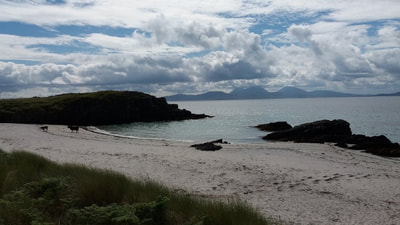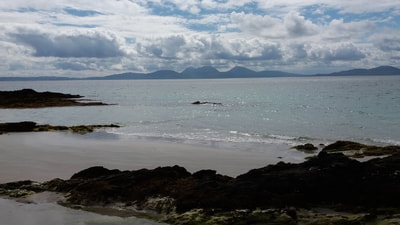 The Paps of Jura
The Paps of Jura We reach the summit as the weather deteriorates, so on with our waterproofs. The walking guide is right, the eastward descent to the ruined Priory is far easier. The RPSB manages Oronsay habitat for corncrake and chough. We hear corncrake in the hay meadows about Priory Farm, deep in umbellifers. But it’s raining heavily so after a study of tombstones in the Priory we head for the crossing. Visibility is poor but the farmer is driving back across the sands having off-loaded his sheep. And my friend’s navigation is first rate.
















 RSS Feed
RSS Feed